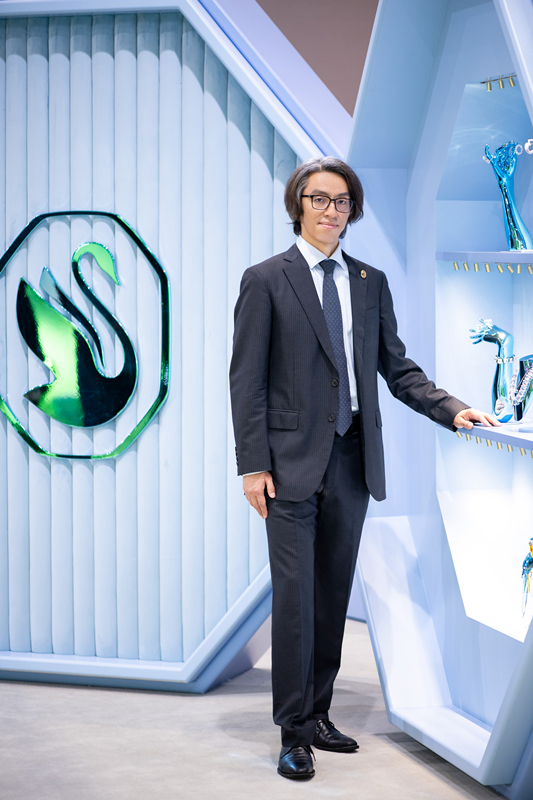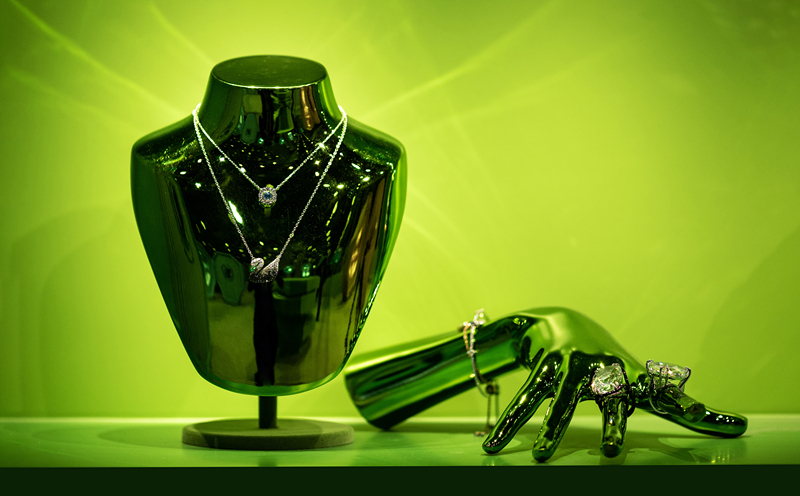Top executive: China has become Swarovski's biggest market
- By Zhang Rui
 0 Comment(s)
0 Comment(s) Print
Print E-mail China.org.cn, November 10, 2021
E-mail China.org.cn, November 10, 2021
A top executive of global crystal producer Swarovski told China.org.cn that China has become Swarovski's largest market in the world after over 30 years of promoting the brand in the country, and they see the market's huge potential in the years to come.

"As early as 2019, China has become the biggest market for Swarovski, surpassing the United States," revealed Tony Wei, managing director of Swarovski's Business Services and Crystal Business in Greater China, during the 4th China International Import Expo (CIIE) in Shanghai on Tuesday. "As Chinese management, I hope China will always be the number one market for Swarovski."
Statistics from 2019 show that the China market accounts for more than 20% of Swarovski's global revenue. As such, its headquarters in Austria plans to increase strategic investment in China over the coming years, and they are optimistic about the Chinese government's continued opening-up.
"According to independent external research, we believe that this sector of luxury jewelry will have an average double-digit growth in the next five years, surpassing the average growth rate of other markets around the world," Wei explained. "And China's online economy is leading the world. This is a big opportunity for us."

For its second year at the CIIE, Swarovski showcased its five-color booth, which they called "Wonderlab," designed by the company's creative director Giovanna Battaglia Engelbert. Referring to the color scheme, Ivy Zhao, Swarovski's vice president of sales in China and head of Sales B2C China & Corporate Gift Greater China, explained that milky white is pure and the origin of all colors, sapphire pays tribute to founder Daniel Swarovski's first imitation crystal cutting machine, and grass-green represents nature and sustainable development. She added that pink represents a gender-neutral attitude and personality, while yellow is energetic and embraces the future.
Swarovski now has more than 400 retail stores across China, including 36 in Shanghai. This December, it will open a global brand flagship store in Shanghai — the company's first in Asia and the second of its kind after one in Europe. The store will also be the company's biggest in the world, covering more than 600 square meters, and will launch the new "Collection II" products. The Shanghai flagship store will be based on the same design concept of "Wonderlab," and other stores will be upgraded to match the design in the future.
"We want to bring 'attainable luxury' to more Chinese customers, and bring the brand's culture into their lifestyle," Wei said. The Austrian brand is also looking to crossover and mix with local elements and brands. For example, Swarovski has presented products together with the Palace Museum, and exhibited a custom bottle of Wuliangye — a famous Chinese liquor brand. The company will also roll out specially designed products for local holidays, such as Qixi Festival, which in recent years has been promoted as China's Valentine's Day.
The COVID-19 pandemic dealt a big blow to Swarovski's business in retail stores. However, thanks to China's effective control measures, as well as its robust support for enterprises, the rebound has been strong. According to Wei, at some points between the fourth quarter last year and the second quarter this year, when the sales data was at its highest, the company managed to reach about 80% of its 2019 data. China's economy is very resilient, and the country has a policy of vigorously promoting consumption. In addition, the company has also put more effort into its online business, and focused on the island province of Hainan, which has beneficial offshore tax exemption policy due to its free trade port status, with Sanya already being one of the top three Swarovski stores worldwide in terms of sales.

Since China joined the WTO 20 years ago, Wei said foreign enterprises like them have benefited greatly from China's measures to improve its business environment, enhance government service awareness, and encourage consumption. The online economy is bigger and more developed than any other country in the world.
"We have seen huge potential in the Chinese market and the rise of young consumers, and we try to keep pace with the fast-changing Chinese market," Wei said. "And we respond quickly to new demands and changes in consumption of the new generations, plus working with local brands and designers to help them go global." He added that they will also work with the government, organizations and charities to protect the environment, especially water resources, for sustainable and green development.






Go to Forum >>0 Comment(s)